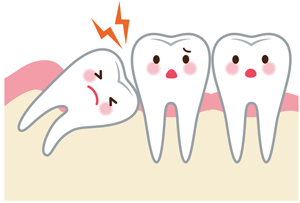Anyone who has walked down the toothbrush aisle at their local store can tell you that choosing a toothbrush isn’t as simple as just selecting a color that you like. The options can be a little bit overwhelming. Angled heads, raised bristles, oscillating tufts, the option to play a song while you brush, brushes with customizable handles that come with packs of stickers, grips that change colors with use: you name it, there’s a toothbrush somewhere that comes with pretty much anything you can think of. So how do you know what to choose for you and your family? Firstly, let me be completely honest and say that no scientific studies definitively show that any one type of toothbrush is better at removing plaque than any another. The issue, in my opinion, is that people just don’t brush long enough or with proper technique. Most of us brush less than a minute, but to effectively reach all areas and scrub off cavity-causing bacteria, it is recommended to brush for two to three minutes.
Which toothbrush is best for you?
In general, a toothbrush head should be small (1″ by 1/2″) for easy access to all areas of the mouth, teeth and gums. It should have a long, wide handle for a firm grasp. It should have soft nylon bristles with rounded ends so you won’t hurt your gums. A head that is too large will not be able to reach the tighter spaces to the back of the mouth. The same goes for shorter handles. Sharper bristles may cut the gums and promote infection.
When should I change my toothbrush?
Be sure to change your toothbrush, or toothbrush head (if you’re using an electric toothbrush) before the bristles become splayed and frayed. Not only are old toothbrushes ineffective, but they may harbor harmful bacteria that can cause infections such as gingivitis. Toothbrushes should be changed every three to four months, even if it still looks to be in good condition. Lots of patients know that information that I just shared, but here’s a tidbit that many people don’t even think of – when you get sick, you should change your toothbrush at the beginning of the illness and after they feel better. By not changing your toothbrush you may be prolonging your illness or even helping to spread it if your toothbrush comes in contact with another family members toothbrush in the holder or on the counter, etc.
What is the proper brushing technique?
Place the toothbrush beside your teeth at a 45-degree angle and rub back-and-forth gently. Brush outside and behind the teeth, your tongue and especially on chewing surfaces and between teeth. Be sure to brush at least twice a day, especially after meals, for 2-3 minutes. To help yourself time it, we often suggest that patients brush for the full length of a song on the radio.
Are electric or manual toothbrushes better?
Electric toothbrushes are recommended for people who have limited manual dexterity, such as a disabled or elderly person and those who wear braces. They are also great for smaller children who are just learning to brush and who would not be able to thoroughly clean their teeth otherwise. There are even some electric toothbrushes that play a song as you use them to help tech proper brushing time. In a normal situation, though, there is no proven advantage of an electric toothbrush over a manual one, so use whatever you prefer and can easily obtain.




